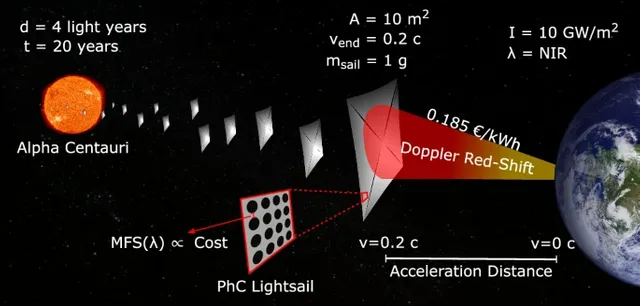New solar sails as efficient as 20% of the speed of light.

Souce
The first to propose the idea of solar sails was the astronomer Johannes Kepler in the 17th century and he did so by observing the cosmos and using logic, Kepler verified that the tails of comets always pointed in the opposite direction to the sun. From this he deduced that the sun must generate some type of repulsive force that propelled those tails to be placed in that position.
Unfortunately that moment produces a very very small thrust, if it were not this small every time we went out home and faced the sun we would receive a slap from the sun's photons, hundreds of square meters of light sail are needed to propel a small probe of just a few kilos to send, a manned spacecraft to, for example, Mars would require tens of square kilometers of light sail and that is a lot of weight, it is a lot of mass of the sail, in addition to a design pain for any engineer, since it has to be deployed in efficiently, that is why they seek to create sails with ultra-light materials that are more efficient in order to achieve greater thrust with less sail mass.

Souce
The researchers who have achieved this breakthrough are Miguel Bessa, associate professor at the Brown School of Engineering, who co-led the research together with Richard Norte, associate professor at Delf University of Technology. Miguel Bessa stated that “Richard's team's experimental breakthrough demonstrates that their manufacturing process is scalable to the dimensions necessary for interstellar travel and that it can be performed cost-effectively. At the same time, my team is very excited to see the essential role of our latest machine learning-guided optimization method in solving such an engineering problem.” interesting and complex
The images without reference were created with AI
Thank you for visiting my blog. If you like posts about #science, #planet, #politics, #rights #crypto, #traveling and discovering secrets and beauties of the #universe, feel free to Follow me as these are the topics I write about the most. Have a wonderful day and stay on this great platform :) :)

